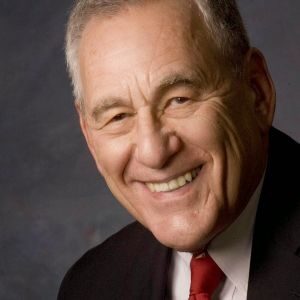Maine is the oldest state in the Union.
That simple statement may send an important message about efforts to keep or bring young people to the state. It could be a tough task, and it could be one doomed to fail.
When the standard is median age – the age at which half the population is younger and half is older – Maine has the highest age. And the six New England states all rank among the nine oldest in the country.
And the reason is clear. Maine ranks among the top three, along with New Hampshire and Vermont, in having one of the lowest birth rates – the number of newborns for each 1,000 people – in the country.
Maine has a birth rate of 10.2 births per thousand, while the national rate is 13.5. That’s a big difference – about a 25 percent difference.
Of course, these two facts – older average age and a low birth rate — have something to do with one another. The older the population grows, the fewer people of child-bearing age there are in the state.
But there is another reason for the relatively low birth rate. Maine has long been known as the state with the smallest minority population in the country. More than 95 percent of the population is classified as white, sometimes listed as Caucasian. In the country as a whole, about 72 percent are classified as white.
The birth rate among whites is far lower than for Hispanics or blacks. Nationally, the birth rate for Hispanics is 22.2 per thousand and 16.4 for blacks, but only 11.3 for whites.
Aside from births, out-migration is a major factor in Maine, as young people leave for higher education or jobs. In the age range 18-34, there is a net population loss. Arrivals exceed departures among people 35 and older.
A Census Bureau study revealed that population growth in the North and Midwest has slowed, with the West and especially the South as the big gainers. The most obvious reason is simply the weather, which may trump many of the efforts states make to keep young people in northern states.
A recent analysis focuses on one man and his effect on the region. Robert Noyce failed to get a tenured faculty position at M.I.T. and moved to California where he was one of the founders of the computer industry in Silicon Valley. Thousands of technology people followed him west, depriving New England of much of the leadership in the information age.
Maine has derived some benefit from this development. The manufacture of semi-conductors here produces many good jobs. And Noyce’s former wife, Betty, became one of the historic benefactors of the state after she moved here.
In 2010, Lynn E. Browne, the chief economist of the Federal Reserve Bank of Boston, noted that the area had faced hard times in the second half of the 20th Century, but it always bounced back. For her, the key is education. People have to be trained to meet changing needs.
Her analysis showed that there is an increasing need for people with associate-degree level educations. Today’s tasks require a level of skill that is beyond what can be attained in high school. And going back to school again for more associate-level training as needs change is easier than obtaining a full-scale college education for a second time.
Maine has been moving ahead dynamically to develop its community colleges, just what the economist ordered.

That fits with the needs of an older population. Older people need more medical care provided by people with advanced education of the type provided at community colleges. The availability of that education may help explain why Maine’s unemployment rate is lower than the national rate.
Right now, many jobs in the health care professions in Maine go unfilled. These are mostly skilled jobs, requiring some specialized training.
The increased need for health care could mean an increased financial burden on government. The current discussions in Augusta illustrate the problem of balancing the budget while providing essential health care.
Health care provides jobs, but the state’s economic development cannot depend on meeting health needs using tax revenues, at least at this time. New economic activity could produce more public revenues to support health care.
To make staying in Maine attractive to Maine youth, there must be good jobs. Good-paying manufacturing jobs won’t return to levels of 20 years ago, Browne wrote, but the regional educational level, key to high-paying jobs in an electronic economy, is stagnating. She suggested that New England must produce a more highly educated workforce to attract new business here.







